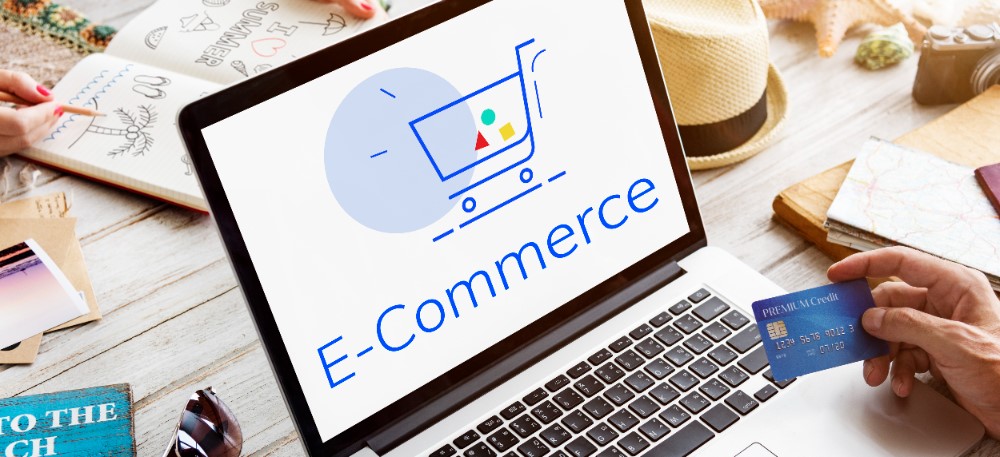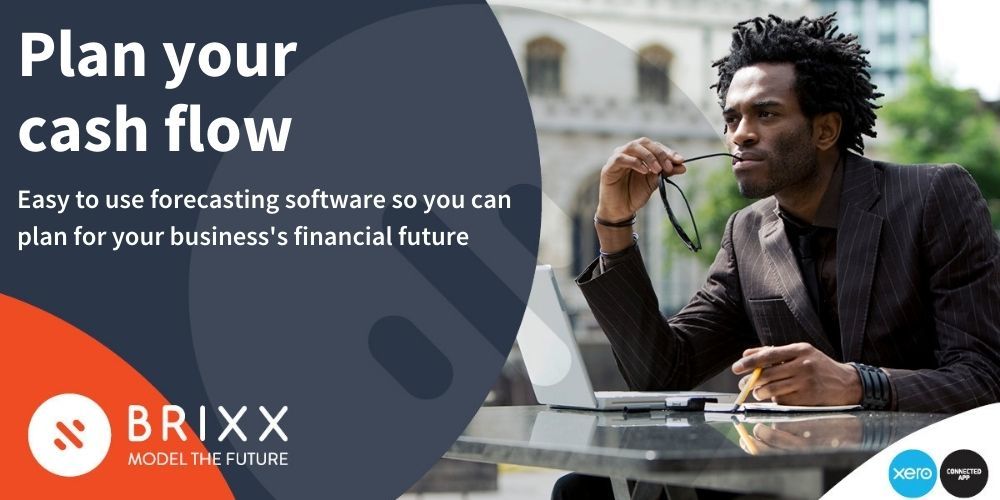

Are you thinking about starting an e-commerce business? If you are, you’re not alone! A lot of people are diving into it, and for good reason. You don’t need a storefront, and you don’t need a ton of money to get going. Just an idea and a solid plan.
What’s cool is, you can literally run things from wherever. Your kitchen table. A coworking space. Even while traveling, if you set it up right.
But let’s not pretend it’s all passive income and palm trees. You’ll still need to put in real work – which means figuring out what to sell, how to get it in front of people, and how to keep the business running smoothly. There’s a lot to learn.
In this guide, I’ll walk you through the first steps, like shaping your idea, setting up shop online, and sorting out the money side of things. No fluff – just the stuff you actually need to know.
Step 1: What will your big idea be?
One of the best things about running an online business is the freedom – you can sell pretty much anything. From handmade candles to vintage T-shirts… if there’s a market for it, you can probably find a way to sell it online.
But before you dive into building a website or picking out a logo, take a step back. What exactly are you planning to sell?
It’s easy to fall in love with a specific product idea right away, but try not to get too locked in just yet. Sometimes the thing you’re most excited about might not be the best business move – and sometimes a random idea turns out to be gold.
The sweet spot? Finding something you actually care about and that people are willing to pay for. That mix of interest and income potential is where great e-commerce businesses tend to start.
Start by brainstorming:
- Your skills
- Your hobbies
- Your passions
- Your knowledge areas
Make sure that at this stage of the process you have identified the key business aspects that will set you apart – commonly known as your unique selling point (USP). This is the secret sauce that will make customers choose you over competitors.
For example, maybe your products:
- Use sustainable materials
- Feature eye-catching, original packaging
- Are backed by a personal brand or personality (think influencers who sell via their own online stores)
- Offer a superior pricing or delivery model
Once you’ve finetuned your idea, take a long look at your potential weaknesses. What gaps will you need to fill? Do you need to enlist a friend’s design skills or find a reliable supplier? Now is the time to plan for the resources you’ll need.
Step 2: Commit to market research – learn about your customers and competitors
Okay, so you’ve got an idea. Now it’s time to see if it actually has legs. Before you pour time or money into building your store, you need to do a little digging — who’s your customer, and who else is already out there doing something similar?
This part isn’t always the most exciting, but it can save you a ton of headaches later.
Start poking around online — Google, Instagram, YouTube, Reddit, even TikTok can be goldmines. You’re looking for two main things: what people want (and don’t want), and what your competitors are doing right (and wrong).
Some stuff to look for:
- Customer complaints: What are people annoyed about? Are products breaking? Is shipping slow? Are sizes faulty?
- What people actually care about: Are they all about low prices, or do they want something high-quality and unique?
- How competitors are positioning themselves: Who are the big players in your space? What are they doing that works… and what seems to fall flat?
Pro tip: don’t skip the reviews. Especially the angry ones and the really enthusiastic ones – that’s where people say what they really think.
Once you’ve got a sense of the landscape, start thinking: How am I different? What’s going to make someone pick your store over the others? The answers you come up with now will help shape your whole approach – from branding to pricing to how you talk to customers.
Step 3: Pick an e-commerce business model that fits you
Alright, now that you’ve got an idea you’re excited about and you’ve done some solid market snooping, it’s time to figure out how you’re actually going to run this thing – day to day, money-wise, and behind the scenes.
In other words, what’s your business model going to look like?
There’s no one-size-fits-all here, so here are a few common setups to think about:
- Direct-to-Consumer (DTC): This one’s pretty straightforward – you sell your product straight to your customers through your own website. You get full control over how everything looks and feels, from your branding to the customer experience.
- Wholesaling: Buy products in bulk, sell them individually at a markup. This can mean bigger profits, but it usually needs a larger upfront investment (and space to store your stuff).
- Dropshipping: You don’t keep any inventory. Instead, you partner with a supplier who ships the product directly to your customer. You handle the marketing and storefront, they handle the rest. It’s low risk, but margins are usually thinner.
- Subscription: Think monthly boxes, memberships, or anything recurring. Great for creating steady income — but only works if your product is something people want over and over again.
Whatever you choose, make sure it fits you – your product, your audience, and how hands-on (or off) you want to be. Your model is going to affect how you price things, how you advertise, and even how you spend your time day to day, so it’s worth getting this part right from the start.
Step 4: Finding the right pricing strategy
Pricing is far more than a number – it’s a series of tough decisions that reflect your new brand and market positioning.
Start by revisiting your competitor analysis. How do they price similar products? Are they targeting budget-conscious shoppers or positioning themselves as a premium brand?
Decide how you want to compete:
- On price: Undercut competitors to attract price-sensitive customers.
- On quality: Offer superior products that justify a higher price point.
- On convenience: Make buying from you easier and faster.
- On service: Provide exceptional customer support to win loyalty.
Remember, pricing is also about profitability. Will your chosen price cover your costs and deliver a healthy margin?
This is where a financial planning tool like Brixx can come in handy. With Brixx, you can forecast your revenue, track your costs, and ensure your pricing strategy supports your business goals.
Step 5: Building a marketing plan
Your new online store may be absolutely brilliant, but without organic traffic, it’s just another website floating in the vast internet void. That’s why you need to spend time thinking about a well-thought-out marketing plan.
Start by identifying your target audience. Ask yourself:
- Who are my ideal customers?
- Where do they spend their time online?
- What kind of content resonates with them?
From here, choose marketing channels that fit your audience. For example:
- Try running some targeted ads on platforms like Instagram or Facebook (they let you zero in on specific interests, which is super handy when you’re just starting out)
- Jump into online communities where your potential customers hang out (that could be niche forums, subreddits, or Facebook groups. Don’t just promote your stuff – actually get involved and add value)
- You could also team up with small influencers or bloggers who already have your audience’s attention (a shoutout or a sponsored post from the right person can go a long way)
At the beginning, it’s all about trying things out. Some stuff will flop, some stuff will click — and that’s totally normal. Track what’s working, drop what isn’t, and keep tweaking your approach as you go.
Step 6: Setting up and running your e-commerce Business
You’re nearly there! However, before you get too excited about the launch of you brand new business, there are still a few things to take care of first. This may not be the most exciting part of the journey, but it’s absolutely essential and will save a ton of trouble later on.
Don’t skip this step. You need to ask yourself some boring but important questions: How are you handling taxes? Do you need a special license for what you’re selling? Are you sure you’re following all the legal stuff?
I know it’s easy to get lost in the exciting parts, but taking care of this now will mean fewer problems down the road. Plus, you’ll feel a lot better knowing it’s all sorted.
- Do I need insurance?
- What kind of taxes will I need to pay?
- How will I manage my inventory?
- How will I handle shipping and delivery?
- Do I need any patents or trademarks?
- Should I open a business bank account?
- What terms and conditions should customers agree to?
- How will I ensure GDPR compliance?
- How will I pay employees or contractors?
- How will I keep financial records?
Keep a running checklist of these questions (and others that come up) to ensure nothing slips through the cracks.
While operational tasks might seem mundane, they’re crucial. Unaddressed, they can lead to costly problems. For instance, if you’re holding stock, inventory management will take up a lot of your time initially.
Balancing stock levels is tricky: order too little, and you can’t fulfil customer demand; order too much, and you’ll tie up funds unnecessarily. With no sales history to guide you, it’s a delicate balancing act.
Step 7: Creating a financial plan
Your financial plan is the backbone of your e-commerce business. It answers the big question: can your business make a profit?
Even if finance isn’t your strong suit, you can’t skip this step. Understanding your numbers helps you avoid costly mistakes and boosts your confidence when pitching to investors or applying for loans.
Start Forecasting with Brixx
Financial planning tools like Brixx simplify the process. Brixx is designed for startups, allowing you to map out a three-year financial forecast even if you’re not a finance expert.
1. Setting up your Brixx plan
Your first step is to start a new plan:
Begin by creating a three-year forecast. Long-term planning may seem daunting, but it’s essential. Investors and lenders often expect detailed financial projections, and strategic planning helps you prepare for growth.
Your Brixx plan starts as a blank slate, with placeholder income and expense components. Customise these to fit your business. Add sources of income, running costs, asset purchases, and funding sources.
2: E-commerce income forecast
Let’s say you’re launching an eco-friendly soap business with a multitude of scents. Start by forecasting your product sales. For instance, you might sell premium soap bars for £3.99, with a cost of £1 per bar. In Brixx, you’ll enter these as income components and estimate your monthly sales. Use the inventory feature to link costs to your sales forecasts. This way, your inventory costs automatically adjust as your sales estimates change.
Section 3: Operational costs
Next, focus on fixed costs such as website hosting, marketing, and rent. These don’t vary with sales but are crucial to your business operations.
Marketing spend, in particular, will fluctuate as you test campaigns and learn what works. Brixx allows you to organize costs into groups (e.g., “Operational” and “Marketing”), helping you track where your money is going.
Section 4: Asset purchases
If your business needs equipment (e.g., laptops, office furniture), these count as assets. Unlike regular expenses, assets depreciate over time, which affects your business’s financial value.
Section 5: Funding
Once your income and expenses are forecasted, you’ll see whether your business will need additional funding. You can model different funding options in Brixx, such as personal savings or loans.
For example, you might inject £10,000 of personal savings or take a £20,000 loan. Each option affects your cash flow differently, so it’s worth exploring both.
Exploring different growth scenarios
With your base plan in place, use Brixx to model growth scenarios. For instance, what happens if sales increase by 25%? What if they drop by 25%?
These scenarios help you understand your business’s resilience and plan for different outcomes. You can also map out long-term goals, like expanding your product range or hiring staff.
Conclusion
Launching an e-commerce business involves a lot of moving parts, but with careful planning, you can navigate the challenges. By using tools like Brixx, you’ll gain a clear picture of your financials and set yourself up for success.
Take it step by step, and soon you’ll be ready to turn your business dreams into reality. Get started with Brixx today for free!
















